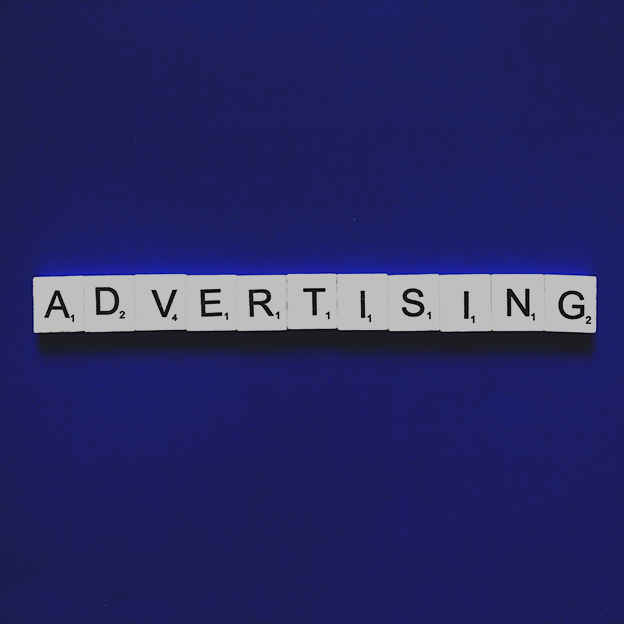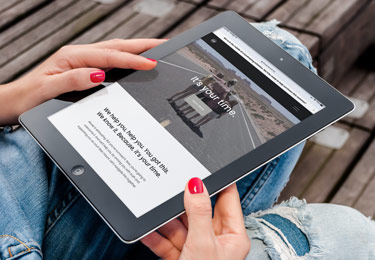Category: Blog
Reputation Is The Invaluable Intangible


When it comes to people, character is often tied to reputation. Wise quotes are regularly offered that suggest the importance of worrying more about one’s character than one’s reputation — since reputation is developed through an outsider’s lens.
But when it comes to business, that lens is basically everything. A brand can’t afford to disregard the quality of its reputation by simply hoping its character will keep it afloat in the marketplace. Why?
Because brand reputation influences other factors for success, a tested theory we leverage as part of our proprietary H.A.L.O. business system. One look at cancel culture proves that. A brand can be here and then be gone, like that, based on an outsider’s view or experience — based purely on its reputation.
Which means, the quality of a brand’s reputation can impact revenue, relationships and recruitment. And no business leader wants any of those to suffer.
Reputation has been labeled by some as being more valuable than money, while others have noted how difficult it is to build it and how easy it is to obliterate it. Of course, when we at WHYFOR hear about the connection between character and reputation, we can’t help but think of what we refer to as brand anatomy.
That anatomy, a brand’s DNA, could be correlated to its character. And when it comes to marketing, understanding and developing brand anatomy is a critical first step to building a larger strategy for tackling any one of the six problems every business faces, including reputation.
And, to add urgency to the issue, time is of the essence as more people spend more time engaging directly with brands and businesses. According to Hootsuite, 875,000 new users around the world begin using the internet every day. On average, users spend about seven hours online daily. And HubSpot reports 5.6 billion searches are conducted on Google every day.
Those numbers don’t simply illustrate online volume, they illustrate potential — for engagement, for search, for visibility, for share of voice and for reputation issues to improve or worsen, depending on a brand’s strategy to manage it.
This is where H.A.L.O., with its holistic approach, proves itself incredibly valuable. With a thorough analysis of a brand’s anatomy and a panoramic view of a brand’s reputation challenges, strategies can be developed to elevate it by investing in tactics such as:
- Improving a social media presence
- Earning secondary endorsements through public relations efforts
- Ensuring a quality product
- Managing an improved customer experience
- Facilitating authentic, positive online reviews
And honestly, all of that just scratches the surface. With a good understanding of how a brand’s reputation can impact other elements of business success, it is imperative that our H.A.L.O. strategies trickle down and through any other operational arm of a business — from sales to operations and HR to frontline customer service.
Everything is connected. And when it comes to the fragility of brand reputation, particularly in this era, success depends on everything being buttoned up, tight.
Learn more about our H.A.L.O. business system, and the process we use, by downloading our one-sheet.
Relationships Are Everything. Really.


Relationships are funny things. In life, the way we categorize our relationships generally runs along a spectrum, from loathing to loving — for any number of reasons. In business though, it seems there are poles.
There’s little room for indifference, especially when it comes to the end user. Something or someone or some brand is either loved or hated. There is no in between.
Think about it. In general, we’re hot or we’re cold when it comes to the relationships we form with brands. If you doubt this theory, read any thread of comments on any brand’s social media. The opposite ends of the spectrum will jump out immediately, as will the quality of social media’s collective sarcasm.
And that’s just one type of business relationship. What about the ones formed within an organization? And what about the ones that organizations form with other, like-minded or like-missioned organizations?
They’re all important. They’re important because business is built on relationships, but also because every kind of relationship has the ability to impact revenue. And every relationship has the ability to influence a brand’s reputation.
This should start to sound familiar if you’ve kept up with our series of blogs detailing our proprietary H.A.L.O. business system. And if it doesn’t sound familiar, let’s just say every business leader should recognize that the obstacles a brand or business is facing is no different than the same six challenges every other brand or business faces.
Everything is connected, including relationships, revenue and reputation. One weak link can create slack in the proverbial chain allowing progress and forward movement to bottleneck. No one wants that.
It’s why an inward look, as part of our H.A.L.O. process, is so crucial. And it’s why that inward look needs to be holistic instead of reserved for only certain departments. Nothing should be overlooked, since everything has the potential to influence revenue.
When it comes to relationships, we look at an organization’s:
- Internal marketing and communications
- External marketing and communications
- Internal processes such as HR and benefits
- External, B2B partnerships
- Client-centered, or B2C, exchanges — including the sales process
- User experience across all platforms and interactions
- Referrals and testimonials
When you think of your brand’s relationships, and cross reference that list, have you covered all those bases? Because, if we’re being honest (and good relationships are built on honesty), that’s just a short list.
Relationships run deep. Not unlike the ones in our personal lives, business relationships have context and history and future implications. Sometimes they result in exciting collaborations and immediate referrals and sometimes they take time to marinate before they turn into something unexpected down the road.
But one unwavering variable is the truth that they are always important, in every setting and across every platform. Because relationships impact revenue.
To better understand how your brand’s relationships are impacting your organization’s reputation, revenue and retention, dig in to our H.A.L.O. business system a little deeper. Our one-sheet offers more details.
From Rob’s Desk: But Why Is Revenue The Problem?


Cash flow. Finances. Liquidity. Whatever name you give it, most business owners keep at least one eye, at all times, on revenue. It’s part of almost every conversation. It’s pivotal to success. It’s a perpetual holy grail. And most times it seems there isn’t enough of it.
It also might be the answer I hear most often when I ask business leaders about their most pressing challenge.
Here’s the thing about revenue though — it’s codependent on so many other factors. It doesn’t stand alone. Revenue by itself isn’t a thing. It is unequivocally influenced by at least one of five other challenges that every business or brand faces.
So instead of asking how to solve revenue challenges, the real question to ask is this: Why is revenue a problem?
Yes, revenue could be a problem. But there’s always a reason for it. And that reason is the actual root. Revenue is just a symptom of something bigger.
This is the part of the conversation where most business leaders I’m working with release one of those exaggerated exhales, because as part of the proprietary business system we’ve developed at WHYFOR — known as H.A.L.O. — things are starting to unfold in front of them.
H.A.L.O., which stands for Holistic Approach Leveraged Outcomes, dissects the six potential challenges every business or brand faces, singles out the most pressing and then develops insight-driven strategies to overcome them. Here’s how.
- Let’s say revenue is the perceived problem.
- As part of H.A.L.O., we know we need to ask why revenue is the perceived problem.
- Once we ask, we learn that a brand is trying to gain traction in a crowded market.
- So, perhaps recognition is actually the problem leading to revenue challenges.
- Based on those and other insights, we develop metrics-anchored strategies to solve those recognition challenges.
- Then, we implement. We measure. We adjust. And we celebrate a positive revenue trajectory.
To be fair, our H.A.L.O. system is much more comprehensive than six relatively simple bullet points. But it’s just an example. The bigger moral of the story is that every business faces one or more of the same six challenges, which means we don’t have to devise a new cure every time.
H.A.L.O. is built to solve for those six challenges in ways that are unique to each brand or business, incorporating operations, marketing, communications and internal processes. And what would internal operations or processes have to do with marketing and revenue?
Because your perceived revenue problem may actually be a retention problem. And with H.A.L.O.’s holistic approach comes a recognition that everything is connected and everything has the potential to impact revenue.
Your business deserves a deeper, more comprehensive look, like the one H.A.L.O. offers. Why? Because your success, and your revenue, likely depend on it.
To gain clarity on what may be impacting revenue for your brand or business, schedule a complimentary, 30-minute consultation.
A Holistic Approach to Building Brand Recognition


Brand recognition is that seemingly eternal marathon. Unless you’re Nike or Uber, it’s tough to stop running in search of the finish line where everyone knows you. And then when you become the Nike or Uber, your recognition efforts morph into reputation management.
To gain the brand recognition they’re looking for, business leaders may think they need to sink large sums of money into advertising, blow up their social media feeds or score some PR hits.
And then what if none of that works?
Recognition is one of the pillars of our proprietary H.A.L.O. business system, the one we started talking about in a previous blog. It’s one of the six challenges faced by every business. Why?
Because statistics indicate it takes up to seven interactions for people to remember a brand, yet it takes only seven seconds to make a first impression. That means that any efforts to build brand recognition that aren’t rooted in strategy could seriously backfire in the most detrimental of ways.
Which is to say, you could turn someone off before they even give you a chance to prove yourself – as a brand.
Where many agencies may dive directly into tried-and-true tactics promising to solve recognition challenges, we take a different approach. Our H.A.L.O system requires that we go deeper to understand the root causes of recognition challenges — and, spoiler alert, the root causes may be something other than what is expected.
Brands may not know where their audiences are, and even if they do know where they are, they might not be speaking to them in a way that fosters brand loyalty. That creates problems which result in inefficiencies and leads to losses and frustration.
Because banner ads and social media posts only gain traction if they include strategic messaging and are deployed in a way that meets a target audience exactly where it is.
We’ve seen it happen with a number of clients. We’ve watched them come to the table with revenue struggles, which we discover are actually tied to recognition problems, which — through our work — we find are rooted in outdated, misaligned messaging for an audience that isn’t fully understood.
As an example, of course.
Recognition challenges might also drive back to a subpar visual presence involving lackluster creative, missing or deficient SEO initiatives or misaligned relationships. Solutions may involve creating strategic partnerships, investing in insight-driven SEO strategies and reimagining the brand’s look and feel.
So, if it’s starting to sound like everything fits together, there’s a reason for that. Everything does fit together, which is the very essence of H.A.L.O. It’s a Holistic Approach that produces Leveraged Outcomes.
More than that, a well-researched strategy gives a “why” to every marketing move. And at WHYFOR, we only like the moves we can measure. Despite popular opinion, recognition can be measured.
We’ll show you how.
To learn more about how our proprietary H.A.L.O. business system can help your brand recognition, download our one-sheet.
H.A.L.O. Sets Us Apart


We’re not angels at WHYFOR, and we don’t think we are, so don’t let our fun wordplay fool you. H.A.L.O. is our system. It’s how we do what we do. It’s what sets us apart from every other agency out there.
And we figured it was time to pull back the curtain on it.
Because we don’t need anyone assuming it’s an actual halo. It’s not. H.A.L.O. stands for Holistic Approach Leveraged Outcomes. And we’re going to pull those concepts apart to make sure brands and the professionals leading them understand how and why our approach to marketing is different and, most importantly, effective.
For starters, H.A.L.O. is not a marketing scheme. It’s not a plug-and-play or a template. It’s a business system, one that looks at an organization or brand on the inside and out, from operations to communications and everything in between. One that examines a brand’s DNA, analyzes its audiences and researches the best way to reach them.
And that’s just the beginning. Actually no, that’s all more toward the middle. That’s more like the thick of it.
H.A.L.O, from the get-go, recognizes that every business, every brand, every organization faces the same five challenges. No matter what — business leaders face the same five issues. (Yes, that was worth repeating).
And each of those five issues have the ability to impact revenue, which is a universally accepted goal. Increase revenue, period. It’s what every sales meeting boils down to, what every forecast points to, what every organization needs for growth and prosperity.
Our H.A.L.O. system is also our logo — that geometric shape with a Y in the middle. It’s the platform we use to connect the dots, to show business leaders how one issue influences another and how any deficiency can negatively impact revenue. If we could have two logos (which we’d never advise) it might include a light bulb, because those are the moments we experience with business leaders as we work our way through our H.A.L.O. system.
Our approach boils everything down instead of building everything up. It bypasses all the marketing buzzwords and formulaic philosophies used by most agencies in favor of terms everyone understands.
We use words like “relationships” and “retention,” “recruitment” and “reputation.” Clean, simple, universal concepts that can easily be understood across any organization.
Because simple doesn’t mean “less than.” To us, it means it’s accessible. And accessibility is key to adoption and adoption is key to success.
So over the next few weeks, we’ll dive into each of the five issues we know every business and every brand is facing. Yes, we understand there is nuance and context to different industries and different products, but the root issue is always one of five things.
We’ll unpack it all and illustrate how our H.A.L.O. system unearths the obstacle and ties together tailored solutions. So, check back for our next installment, and until then, take a look at our H.A.L.O. one sheet.
It summarizes our unconventional approach.
From Rob’s Desk: Time to Fine Tune Your Advertising. Now.


I’m going to go out on a limb here and assume we’re all completely over COVID, from an emotional standpoint. This unwelcome guest has caused unthinkable damage, reaching every corner of our lives.
And it continues to, in different ways, with each passing day. Including right now, with advertising.
This period is, without a doubt, the most important time for brands and businesses to fine-tune their advertising efforts. Why? Because platforms that were laid barren during the height of pandemic lockdowns and quarantines are buzzing again, which means the attention of consumers is once again being fragmented by a flooded advertising marketplace.
As a consumer myself, I could feel it. Advertising is back, in a big way. And statistics back up my organic spidey-sense. When I looked into my hypothesis, these metrics jumped out at me.
- Nearly 75% of advertisers held back campaign launches during the pandemic, and about 50% of them had plans to launch them this summer.
- Traditional advertising may have taken a hit, but digital spend is up. Search ads have seen a significant bump, according to industry reports.
- Paid search and social media were the only two platforms that maintained positive growth during the pandemic.
- According to WordStream, the average time spent per day with digital media is almost 8 hours, compared to 5.5 hours of traditional media (which is decreasing).
- Digital ad spend is expected to increase by more than 14% this year.
Consumers are spending more time engaged with digital media and advertisers are spending more money to grab their attention, creating an increasingly competitive playground for brands and businesses trying to increase their presence in the minds of their audiences.
So, when I say “fine tune,” I don’t mean simply adjust the target parameters on your Facebook ad. I mean, it’s time to truly understand who you’re trying to reach, to honestly marry messaging and audience expectations, to clearly communicate your unique offering and influence your audiences in a way that allows them to consider what they’d miss if they failed to act.
How do you do all that? Strategically.
It’s a simple answer and a complex need, but it’s not complicated. Those two things are often confused: complex vs. complicated. This is where I prefer to use the word “comprehensive.” And it’s the ideal approach for fine-tuning advertising.
A comprehensive approach, one that analyzes internal and external factors, one that incorporates brand anatomy, audience personas and strategic plans for platform utilization, and one that leans on exclusively measurable tactics allows brands and businesses to reshape (read: fine tune) advertising initiatives in ways that more appropriately connect with target audiences.
Like a comedian with a joke — you want your work, your efforts and your advertising investment to “land.” It can’t land if it gets lost. And that’s expensive.
And it’s getting crowded out there.
To better understand your current advertising landscape, reach out and schedule a complimentary, 30-minute consultation to review.
Purpose Statements Guide Business Relationships


Life is full of questions, even if you don’t live with toddlers. Can I make a U-turn here? Why are acid-washed jeans popular again? How did I spend so much money on that?
And (gulp) what is my purpose?
That last one is a big one. It’s one every business asks, too. But the real question is, why should the CEO of one business spend even one second caring about the decided purpose of another organization?
Because that purpose will very likely define the spirit of any relationship he or she forms with that company.
Purpose statements, like values, should serve as a guiding force. It should be the bottom brick on every professional pyramid. It should reflect the honest commitment behind every company.
It should. It doesn’t always.
Purpose statements are sometimes developed, fine-tuned and cast aside. Sometimes they don’t even see the light of day as certain businesses run out of steam after crafting value statements and taglines. But purpose is the critical fuel that drives inspiration and moves ideas forward.
Empower people to succeed.
At WHYFOR, our purpose is to empower people to succeed. Four words weighted with context and passion. Not a manifesto, not a billboard, not a schnazzy, buzzword-filled tongue-twister that leaves people confused and clueless.
Just a simple truth.
What does that mean? It means we’re not here to make clients feel uneducated or out of touch. Instead, we’re here to make them feel stronger and more confident. We’re here to make sure they understand the “why” behind the strategies we develop and ensure they can digest the analytics derived from every move we make.
Because if we can’t measure it, we just don’t do it.
And since we’re invested in the success of our clients, we take the time to understand how success is measured — not by us, by our clients. We’re successful if our clients are. That’s how our whole purpose works.
One of the more rewarding opportunities we have in client relationships is helping them find their true purpose. It should come as no surprise that a number of brands and businesses don’t know their actual purpose.
They think they do. And they might be close.
But they benefit from taking the time to unravel who they are and what they offer as a means of uncovering their authentic purpose — their bottom brick. Everything builds off of it. We would know.
Our purpose, empowering people to succeed, gives us license to treat clients in a different way than other agencies do. Here, clients aren’t ranked by notoriety or retainer. They’re not evaluated and distributed based on importance. We’re all in, every time.
And it means we feel comfortable working with clients to build their own in-house marketing and sales teams or strengthen the ones they have. Because we want to empower them to succeed, with or without us.
Isn’t that something?
Looking to feel empowered for success? Let’s talk.
The Real Value of Integrity


It can be difficult to feel integrity. A lot of companies list it as a value — as in, they value integrity among their staff and as part of the relationships they have with clients. But how do you know, for certain, that such an aspirational concept is real, beyond just letters on a page?
Through experience.
Integrity is equated to authenticity, to courage, to success, to character — and Warren Buffett has classified it as the singularly most important trait needed when hiring an employee. There’s a widely circulated quote about integrity by C.S. Lewis that reads, “Integrity is doing the right thing even when no one else is watching.”
That’s what we’re doing over here at WHYFOR. Quietly exercising our integrity.
We do it in a lot of ways. By doing what we say, by refusing to nickel-and-dime, by creating work that works in new ways instead of doing work that’ll do, and by investing in outcomes with an understanding that success is a mutual thing. It’s what any client would want from a strategic marketing partner.
A client looking for the kind of partnership that stands out for the novelty of its passion, honesty and commitment may find that type of professional integrity rare but beneficial to have over the long haul.
Integrity, it seems, walks softly. But not without confidence. Because doing the right thing is always going to be the right thing.
It’s part of the reason we’re proud of our affiliation with a non-profit founded by one of our staffers. For Your Record launched late last year and in June will begin offering financial grants to domestic abuse survivors to cover the costs associated with court filing fees and public records request fees.
The organization needed a mailing address that wasn’t a home address, for a variety of reasons. And WHYFOR never hesitated, for a different variety of reasons — the first being our integrity.
It’s just how we operate. Supporting a project that will support a community in need means we’re contributing to the greater good, which is one of our missions. Because we’re more than taglines and email campaigns, as we’ve mentioned.
This is how we’re built. WHYFOR is a company that reflects the spirit of its values — one that works hard, thinks big, gives back and follows through. Other places can say that, too. They can say it. But do they mean it? Do they live it?
Not all of them. Words, even ones labeled “values,” can be said or written very easily — even when they’re hard to come by. The writing or the saying is the easy part.
The living is the hard part. That’s where the effort is. But for us, it takes no effort because it’s genuine. And isn’t that the best indication of a perfect fit — where values embed themselves so seamlessly that they can’t be sidestepped even if someone tries?
We think so.
Results Bubble Up From Actionable Values


As a business leader, you care about results. We understand that. But we also believe business leaders care — at least a little — about how those results are achieved.
At WHYFOR, our results are a direct byproduct of our values. Think of our values as critical ingredients, and our results as the main dish your taste buds can’t even believe they just experienced.
We’re not a drive-thru branding agency. There are enough of those. We’re strategic partners who filter our values through our work, every day, to deliver the kind of results that actually matter, ones that can stand alone in their impact and sync with the revenue-related progress you’re seeing on your side.
We don’t bore you with inconsequential stats or measurements designed to add fluff. Neither of us have time to waste. We are purposeful, which means we only do measurable work and we always make sure to actually
measure it.
Our quarterly business reviews, or QBRs, are a perfect example of that. They offer clients an in-depth analysis
of what’s working, to what extent, and what isn’t. We use analytics to celebrate wins and discuss new paths
forward where they’re needed, because we’re firm believers that solutions are often found by understanding what’s not working.
And, because we want to influence the world we want to live in, we’re more deeply invested in the client work we’re doing as compared to quick-serve marketing agencies. We’re choosey, and our commitment to the work, and client success, reflects that. When clients succeed, and our work works, it means the world is a little bit better.
And that’s incredible.
To get there, we consider everything. It’s part of our intrepid nature. The strategy we develop with clients is an all-in affair, allowing us to collectively uncover every possible potential, every hiccup, every upshot — all of it. When we do that, the strategy is battle tested making it that much stronger.
All of that hints at our aversion to settling. It’s not how we’re wired. We like to try new things, look for new tools, see if something might work better – even if something is already working. Because better is better. Isn’t it?
It is that intrepid nature that inspires us to take action. Deadlines, to us, aren’t suggestions. We know they’re part of a bigger plan, so we follow through on every, last meticulous detail. We recognize that we’re just one tennis ball a client is juggling among others, which is why we do what we say we’re going to do.
But don’t mistake our work ethic for a “yes-man” affliction. That’s not us. As the saying goes, you don’t know what you don’t know sometimes, and we believe that phrase swings both ways between us and a client. Influencing a better world may require hard conversations, but we’re here for it.
Because kicking a can down the road, and avoiding challenging conversations, does nothing to positively influence results. And results are what matters.
Learn more about how our values-driven work can help you improve your results.
Sr. Strategist

Welcome to the last job ad you’ll ever have to read! Ok, that may be an overstatement, but seriously, we’re excited you’re here and we hope you’re the perfect fit for our Sr. Strategist role here at WHYFOR.
From digital marketing to content, research to reporting, our strategy team covers it all. You’ll work closely with our Director of Strategy and team of content strategists, SEOs, paid media specialists and designers to ensure our clients have solid 30K-foot strategies that can be actualized at 15K-feet and executed at 0 feet.
None of us are experts at EVERY piece of digital marketing — but in this role, you need to understand the value of all the pieces coming together and know how to weave them into strategies and tactical plans that drive performance for clients. And if you like things boring, this isn’t the gig for you. As our Sr. Strategist you’ll be facilitating client workshops, conducting research, developing personas, building customer journey maps, planning content calendars, working across departments to compile compelling reports — all while contributing to exciting agency growth and carving out a long-term career development path.
It goes without saying (even though we’re about to say it) that you need to be an excellent communicator, both written and verbal, a stellar writer and a critical thinker. This isn’t a color-by-numbers role — proactivity and flexibility are critical.
Sound like you? Good! Check out more details below:

